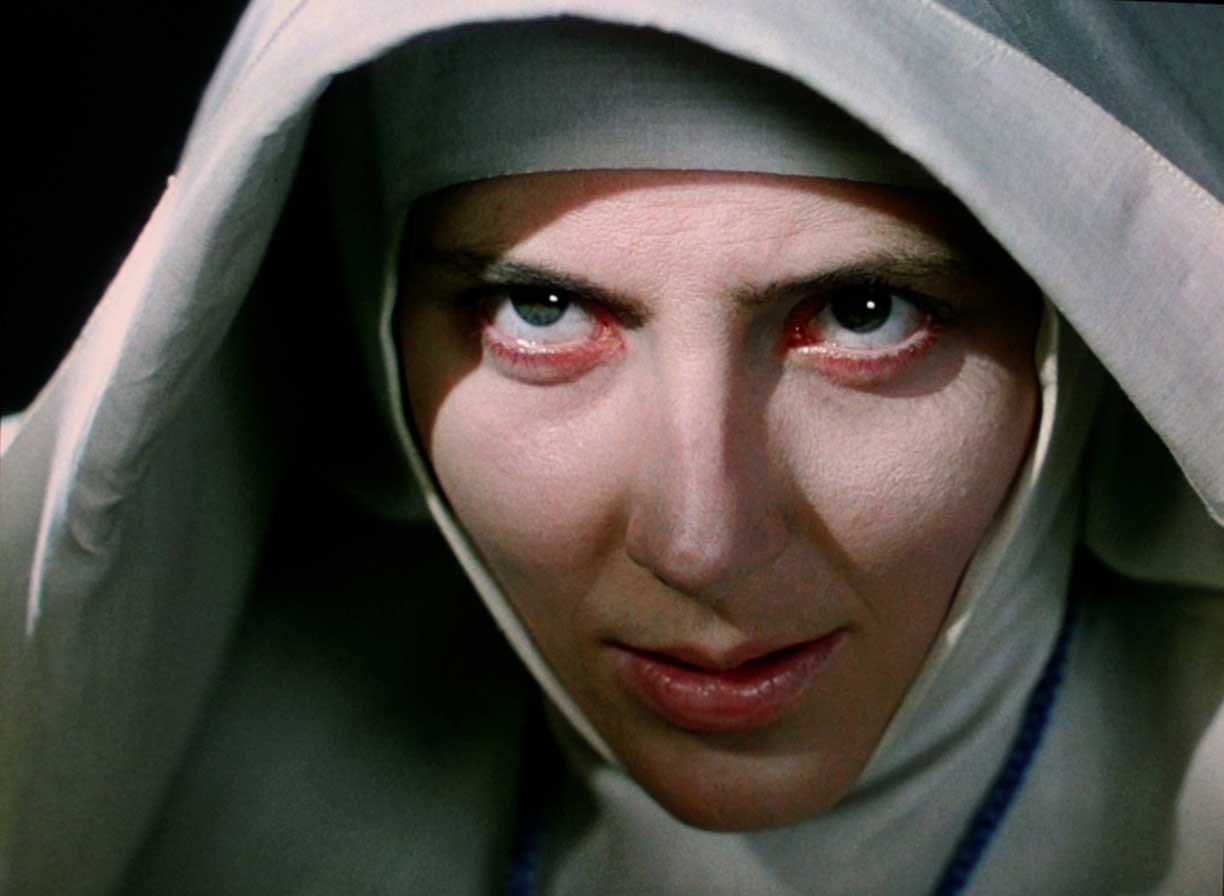In advance of tomorrow’s screening of Black Narcissus in the Women and Religion in Film series (part of a/perture cinema’s Looking @ Art Film program), I asked series organizer Joshua Canzona to share some thoughts about the film (and I’m especially pleased to see his surprising reference to the Bechdel test!).
You can watch Black Narcissus at a/perture tomorrow morning (November 10 at 9:30 a.m.) and stay for a discuss between Dr. Canzona and his colleague from the Wake Forest University School of Divinity Dr. Katherine Shaner. General admission is $14.50, and student tickets are $12.50.

Joshua Canzona:
In planning a series on “Women Religious/Religious Women in Film” we were looking for selections that (1) match our theme, (2) take religion seriously, and (3) represent significant achievements by women in cinematic history.
In Black Narcissus, a group of Anglican nuns struggles to establish a convent and school in the Himalayas. Film scholar and critic Kent Jones is quite right when he describes the film as addressing “an enduring misconception: the longing, indeed fervent, belief that reality can be reconfigured to conform to an ideal image.” And I think this is a central challenge for religion. Where is the kingdom of heaven? Can it be found in this life, on this earth? And, if we must come face to face with our own failings and the fraught nature of the world around us, can these difficulties be overcome with faith? Women are the driving force behind the plans for a new convent. Surely they believe the biblical message, “through God all things are possible” (Matthew 19:26) and “If God is for us, who can be against us?” (Romans 8:31). To find out whether or not this is enough, your readers will have to watch the film. But I can promise Black Narcissus is adept at showing the inner turmoil of women who would change the world.
Concerning the place of Black Narcissus in film history, it is important to note its brilliant use of color to establish a sense of mood and place. The use of lighting in the film is striking. Painted or not, the landscapes are soaring and dramatic. The performances are brilliant and the build up of tension toward a kind of psychological horror is shocking even now.
Women make up most of the cast and the film is based on a book written by a woman: award-winning author Rumer Godden, OBE. Black Narcissus easily passes the Bechdel test, but this is not by itself sufficient reason to consider it a feminist statement. Indeed, novelist Marina Warner claims the film ultimately vindicates male over female. Perhaps. But it is the women of the film who have the courage of their convictions. It is the women of the film who are willing to take a risk and create. And so, I think the film taken as a whole is complex and ambiguous. It is perfect for conversation.
As a final note, I must mention the Orientalism of Black Narcissus. In this context, I am using Orientalism to refer to the attitude of “the west” toward “the east” over the last 300 years or so. This attitude is sometimes a dreamy romanticism about the “exotic” culture of a country like India. It is more often a condescending paternalism toward non-Europeans. In Black Narcissus two characters casually describe the local inhabitants as “childlike.” This is about power. What kinds of attitude and discourse give license to imperialism? What belief system might salve the conscience of those who would seize a country, dominate its people, and strip away its wealth? But here again we have an ambiguity. Made in 1947, Black Narcissus is a reflection coming at the end of World War II and Crown rule in India. This is not a film of imperial triumphalism. So what is it?
Erotic. Transcendent. Enchanting. Black Narcissus has attracted a lot of bold description. It is artistically important and thought provoking. There can be no doubt. It is also an entertaining film with clear influence on subsequent thrillers and horror movies. I hope your readers will join us in viewing Black Narcissus this Saturday and join in what is sure to be a great conversation about a troubling, maddening, and important film.
